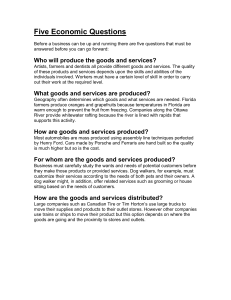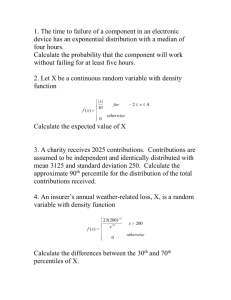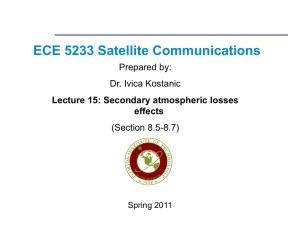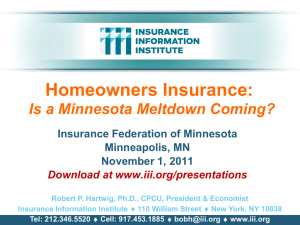Adapting to a Changing World: Climate Change and the Insurance
advertisement
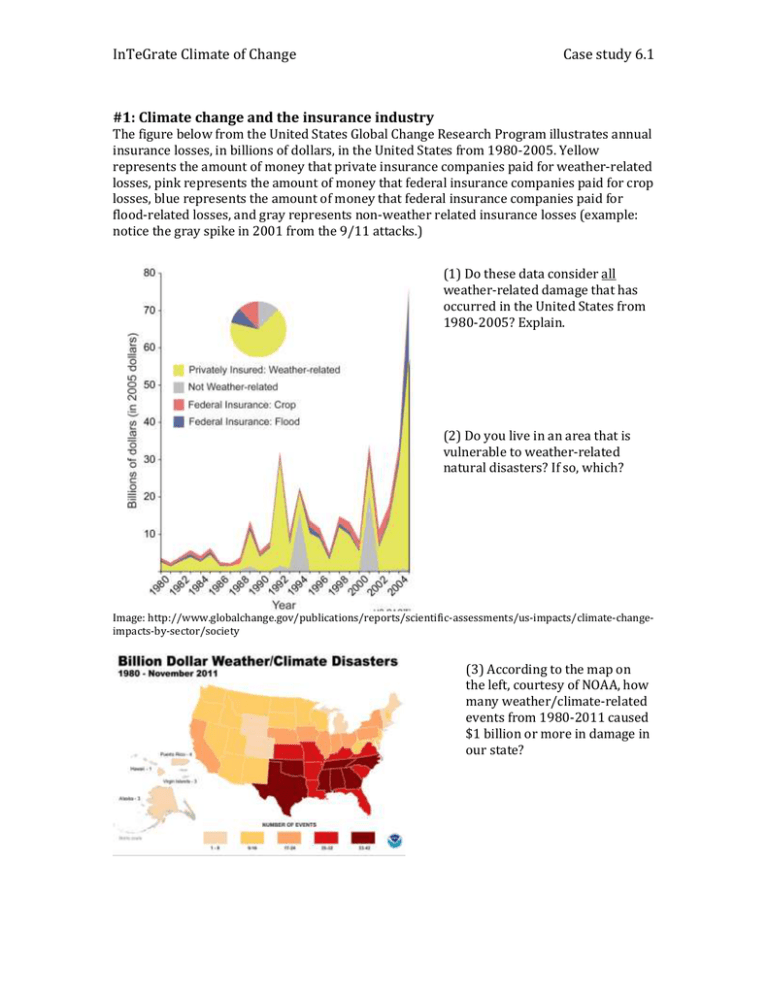
InTeGrate Climate of Change Case study 6.1 #1: Climate change and the insurance industry The figure below from the United States Global Change Research Program illustrates annual insurance losses, in billions of dollars, in the United States from 1980-2005. Yellow represents the amount of money that private insurance companies paid for weather-related losses, pink represents the amount of money that federal insurance companies paid for crop losses, blue represents the amount of money that federal insurance companies paid for flood-related losses, and gray represents non-weather related insurance losses (example: notice the gray spike in 2001 from the 9/11 attacks.) (1) Do these data consider all weather-related damage that has occurred in the United States from 1980-2005? Explain. (2) Do you live in an area that is vulnerable to weather-related natural disasters? If so, which? Image: http://www.globalchange.gov/publications/reports/scientific-assessments/us-impacts/climate-changeimpacts-by-sector/society (3) According to the map on the left, courtesy of NOAA, how many weather/climate-related events from 1980-2011 caused $1 billion or more in damage in our state? InTeGrate Climate of Change Case study 6.1 Here are three examples from the United States and abroad of how the insurance industry is responding to climate change. Please read these examples—then, with your group, visit the “insurance industry” questions and write your answers below the questions. From April 25-28, 2011, over 350 tornadoes swept across the Southern, Midwestern, and Northeastern United States. Alabama was hit particularly hard by the tornado outbreak, with over 200 fatalities and insured losses of over $4 billion. Soon after the tornadoes, Alfa Insurance Company announced that it would not be renewing 73,000 property insurance policies. Most of these cancelled policies were for landlord-owned rental properties, but policies for owner-occupied houses and mobile homes were also cancelled. The president of the company stated, “While Alfa remains a financially strong insurance company, the increased frequency and severity of storms over the last decade have highlighted the need for Alfa to review its overall property portfolio. Our top priority is serving our policyholders. We have a responsibility to manage the company in order to effectively deliver on Alfa’s promise to its customers.” In 2010, State Farm Florida insurance company cancelled 125,000 insurance policies. Most of these policy cancellations involved properties in areas vulnerable to hurricanes. State Farm Florida stated that they were losing $20 million/month and that the cancellations would help “stem State Farm Florida’s deteriorating financial condition.” Swiss Re insurance, Oxfam America, and other partners started HARITA (Horn of Africa Risk Transfer for Adaptation), a weather insurance program, in 2008 in Ethiopia. Roughly 85% of Ethiopians make their living by farming—the staple crop is a cereal called teff—but because of phenomena such as increased drought, many small farms in Ethiopia are struggling. Some farmers pay their insurance premiums in cash, but the program also allows poorer farmers to pay their premiums in labor—for example, helping with community tree planting projects. HARITA also requires farmers to take risk-reducing measures such as growing heat-tolerant crops, scheduling planting dates based on past precipitation data, and making compost to use in their fields to increase soil productivity. Finally, each community elects five people to work with the insurance companies on how to improve the insurance package. HARITA participants increased from 200 households in 2008 to 13,000 households in 2010.


